Time Patrol Read online
Page 2
So it really wasn’t her fault that in her effort to protect the papers, and her ruminations on another obelisk, she might have missed a few things in the park and on Cleopatra’s Needle. Then again, maybe she hadn’t. She’d never know. She can be forgiven if she had, because very, very few people had noticed anything yet, and most never would until it was too late.
If it became too late, which was the whole point of what she was part of.
Such is the nature of time and many more variables. The vagaries of variables, a phrase the Administrator was fond of using and most of those around him were bored of hearing.
Plus, to be fair, she was also thinking about the art in the building behind her. That was the main reason she had her position. A position wasn’t a job, by the way. She’d been told that early on. She had double majors, art and history, at the university, and at first hadn’t understood the importance or the relevance of her expertise to the Patrol.
But eventually it made sense. Art is a timeless recorder of history. From the first drawings on the walls of caves, art is fixed. If the art changed—Edith shuddered, fearing where that led.
Because she was an art person, she didn’t focus on people, which was another oversight for the day.
Edith shoved open the blank metal door decorated with AUTHORIZED PERSONNEL ONLY written in faded red on a rusting metal sign. The door was on the south side of the Metropolitan Museum of Art. The Met was on Fifth Avenue, but on the west side, in Central Park. The museum was accorded the privilege of being the only substantial building inside the massive rectangle of Central Park, granted the land by the City of New York in 1871, a decade before the Needle arrived.
And who says New Yorkers aren’t cultured?
Actually, that was the exact reason why the Met was founded. Edith knew the history of the museum as she knew her art, because the two were intertwined. It was believed back in the nineteenth century that art “elevated” anyone who had access to it, making them better people. While other museums focused on geographic areas (usually the one they were in the middle of) or specific eras, from the very outset the Met strove to be “encyclopedic” in its collection. A visitor to the museum could figuratively cover the globe and the extent of civilization in one visit.
Central Park is the most visited urban park in the United States, with over thirty-five million visitors per year covering 840 acres smack-dab (as Mac, demolitions man for the Nightstalkers, and Texan, would say) in the middle of one of the most densely populated cities in the world. Hiding the Patrol there might seem folly, but it fell under the Purloined Letter theory that the best place to hide something was in plain sight. More importantly, there was the art.
Technically, though, the Patrol was not in plain sight.
Since its founding, the Met grew and grew until some of the original parts of the building were encapsulated inside the current sprawling structure, which was over twenty times the size of the first building. Viewed from above by Google Earth, the museum was a hodgepodge of add-ons, making it clear there had not been a master plan but rather spurts of expansion when the funds were available. The complex stretched for a quarter mile along Museum Mile in Manhattan with a current cumulation of over two million square feet of floor space for exhibits, offices, and, deep below, not officially counted in the square footage, something very, very different.
In sum, the Met represented the art of the world covering over five thousand years. A twitch in the life span of the planet, but covering the critical portion of what we like to call “civilization,” as if humans, who’ve only existed for the blink of an eye in the long saga of the planet, were so important. Such is our hubris. Even more is the belief that we are actually civilized, a point a history major such as Edith Frobish could argue.
Stepping onto the dry marble as the door shut ponderously behind her, Edith shook her head, spraying water about, even though her locks were cut short. She straightened, gaining several inches. She assumed the five foot eleven inches that God had chosen to fit her with and years of ballet training had refined. She had a long, beautiful neck, the sort of neck only great genes and dance give you. She had captured the hearts of many young men with that neck, men who’d been willing to ignore the equally long nose genetics had also bestowed with such largess.
But they eventually couldn’t ignore the obsessiveness for exactness in almost all things in her life.
Edith was a firm believer in proportion. On others less secure, her nose might have led to a quick appointment with the best plastic surgeon in New York. But for her, it worked because it was perfectly in proportion to the rest of her, which was all slim, angled, and long. If any one of her friends—of which there were only two, not being a people person—had been forced into a one-word description of Edith, it would be “long.” She was long, her memory was long, and her patience was long.
Even dampened by the rain, she smiled and said hello to Burt, the longtime guard on the employee side door, while she held up her badge, as per Protocol. The Patrol was very big on Protocol, as was the museum. The blank look he gave her and the way he actually squinted at her badge, she chalked up to too much imbibing the night before. Burt was a good man, but he did tend to indulge his off-hours with the soothing nothingness of beer. Technically, she didn’t think he was a guard guard, really protecting something. That came further in. Like guards in most buildings in Manhattan, he was there to keep the homeless out when they sought a respite from weather. Apparently there were some of the masses the museum could not lift up.
Edith continued down the hallway, and then, where everyone else turned left, she turned right into a narrower, dimly lit corridor. A sign warned: CLOSED FOR CONSTRUCTION.
That sign had been there as long as Edith had been doing her job. It amazed her that no one showed curiosity about what might be taking so long to build. Then again, the Met was full of art people, not building people.
She passed through one of the strange transitions of versions of the building, going from an addition to an older part, where the outside wall of the original structure was now an interior wall of the new building. She was in what had been the workers’ entrance back when an informal caste system dictated different entrances. An old elevator awaited, but there was a sign hanging on it that said it was OUT OF ORDER.
Edith had pondered that sign late at night, usually after a daring second glass of wine. It wasn’t much of a deterrent (like the construction sign), because the only people it would stop were rule-followers, and rule-followers weren’t a problem, were they?
(As a history major she should have known that rule-followers could be a huge problem; for example, Nazi Germany, but her pondering didn’t go in that dark direction.)
Edith pushed the down button and waited, as she’d done so many times, and wondered where to have lunch. One of the benefits of working in Manhattan was that there were so many excellent places to eat within walking distance.
While she waited, her mind went in the other direction in time, to the past, to the day at Columbia when her art history professor had suggested she apply for a “special” position. At the time she’d been thrilled and wondered what unique thing he’d seen in her that she wasn’t quite aware of, for over the years she’d realized it was not only her memory that was applauded but her patience as well. Not something she herself thought was so special, but evidently it was. She didn’t fidget, tap her toes waiting for the slow elevator, and didn’t push the button again.
That wasn’t who she was.
She didn’t get in a rush, and that was important in a job where detail was important.
The other important trait she had, and how her professor had noticed this she had no clue, was that while her curiosity was passionate, she did not feel the same way about needing to share her font of knowledge with others. She was not one who had to tell tales; and, of course, she had some fantastic tales to tell from her time working with the Patrol.
The doors would open when they did, and she was
quite comfortable with that as she was with most things. The doors slid apart, revealing a surprisingly large freight elevator. She walked in and stood ramrod straight. She pushed a button that wasn’t there, leaving her finger on it long enough for her fingerprint to be checked. Well, the button was there, but it was labeled “Fire Department Use Only” and looked like a key opening. Where she worked wasn’t exactly a floor of the museum. She just thought of it as some place below the basement. It was actually six hundred feet below the basement of the Met, buried deep in the bedrock on which Manhattan Island rested. So deep it could survive a direct nuclear strike, but then what would be the point of that? Edith often wondered, which indicated she wasn’t a narcissist and would not have made a good emperor or pharaoh.
Edith stood tall as the apparently old elevator descended with new elevator speed. While the elevator shaft was surrounded by bedrock, around it in the base of the island was a maze of tunnels, which were the lifeline of Manhattan. While no one knew of the existence of the Patrol beneath the city, most New Yorkers were also unaware of the extent of the network beneath their feet that kept their city functioning. They knew of the subways, of course. In a city where owning a car was as expensive as owning a second apartment, the subways were essential. But there are water tunnels, the largest of which was big enough to drive dump trucks through, as well as sewage lines, cables, steam, access tunnels, and abandoned tunnels whose uses, such as coal transportation, were no longer needed.
This network extended from just below the sidewalks to the deepest part of the city’s bedrock (other than the Patrol area): a water aqueduct along the west side of the island that was five hundred feet below the surface, whose contents flowed one hundred and twenty-five miles from the Catskills far north of the city and crossed the Hudson near West Point. There were abandoned rail lines and stations, such as the one at City Hall. There were uncompleted open spaces whose reason had been lost to history. And there were what Con Edison workers called voids, empty spaces in the rock that they came across every now and then, voids that had come into existence when the land came into existence.
There was no map that detailed the entire maze. And if there had been, the deepest place of all, the headquarters of the Patrol, would never have been on it.
It existed because it did not exist, except to the extremely small handful of people who had a need to know. And in fact it wasn’t a hand, but a single finger, a single person, outside of the Patrol, who was aware of its existence.
The raincoat with pockets stuffed full of papers was heavy on Edith’s shoulders as she plummeted into the bedrock, and the voice of her dance instructor echoed in her head: Stand tall, shoulders back, head held high. The elevator doors finally opened onto an even narrower hallway lined with brick. The lightbulbs were the cost-effective type, which meant they weren’t light-effective.
Edith was used to it. She strode purposefully over the hideous tiles only a government contract could manage to lay and turned left.
The brick was an oddity, indicating this tunnel had been here a long time. How long, Edith had no idea, and the Administrator had ignored her the one time she’d asked. She’d then learned she really couldn’t ask any direct question of the Administrator. If he wanted her to know something, he would tell her.
He didn’t tell her much.
For twenty-two years, Edith Frobish had taken this left and met a man at a guard post, rotating among a half dozen, the entire crew rotating every six weeks and never a repeat, and always wanting the same thing: the badge she wore around her long and elegant neck, and then for her to lean her long form forward, press her face against the detector, and have her eyes scanned. Despite the change in faces, the men all had the same dead look in their eyes; it chilled Edith that those eyes had seen things she didn’t want to know about. Each man was dressed in black, wore body armor, and carried an automatic rifle along with a pistol and various other gear that Edith assumed were tools of the trade of combat.
They never made small talk. In fact, they never spoke at all as if they had absolutely no desire to get to know her beyond her badge. Not even a “Good morning” or “How’s the coffee?” Perhaps they were mute? Edith sometimes wondered this on her extremely rare third glass of wine. After a string of non-replies and dead-eyed stares from a dozen or so guards, Edith had learned to match their muteness.
If Edith had been as versed in covert operations as she was in art, she might have realized why such a distance was maintained by these guard guards. It occurred when the guard had classified orders, that, in extreme circumstances, if the post was about to be taken, to terminate those he guarded rather than have them compromised. That’s captured in spy speak. Thus, the Protocol for no personal contact.
It’s easier to kill someone you aren’t buddy-buddy with.
But today the guard guard wasn’t there and for the first time, perhaps too late, Edith felt a sense of alarm.
She tugged the raincoat with the files in the secret compartments closer around her and held her briefcase with both arms in front of her chest. Her first thought was that someone was in trouble, and she was happy it wasn’t her. She did notice some flecks of red on the wall to the right above the guard station, as if someone had squirted a can of spray paint at a distance, but her focus was now directly ahead at the ponderous steel door that blocked her way, her anxiety pushing her forward. There was also a strange odor in the air, one she couldn’t place.
Taking charge, Edith leaned over and placed her face against the scanner. She was rewarded with a green light, and the steel door at the end of the corridor slid open. Edith walked down to the end and paused. A second steel door awaited. As she stepped past the first, it slid down, enclosing her in a small space, with just a single lightbulb flickering above.
This time she placed her hand over a sensor. There was a slight prick. Her DNA was checked, and approved. The inner door went up, revealing a cavern, a void in the bedrock on which Manhattan rested. Two hundred meters long by a hundred meters wide and over thirty meters high.
Except there was only darkness facing her where there should be a spotlight focused on the HUB.
It was an absolute blackness, one which the scant light coming from above her couldn’t penetrate. In fact, like a black hole, the light was sucked in and absorbed completely. Edith swallowed, because there was a palpable sense of evil emanating from the darkness. As soon as she felt it, and then thought it, she felt foolish, because how can one sense evil?
But she could.
Edith reached to her left, fingers fumbling on the wall, searching for the master switch. Maybe they were playing a prank? A surprise party?
As soon as she thought that, she knew it wasn’t true. The Patrol didn’t do pranks, and it wasn’t her birthday. And the sense of dread she was experiencing was unprecedented. While she logically knew one could not “feel” evil, she knew that knowledge was wrong.
The Administrator had told her one time that there were things in the universe the human brain could not comprehend, but the body did.
Trust the body, he’d told her, but for someone like Edith, that wasn’t acceptable.
Later she would wonder why she tried several times to turn on lights that didn’t exist with a switch that didn’t exist into a darkness that she intuitively knew couldn’t be breached. And why she stood so long staring into that darkness, mesmerized. She’d always known something like this was a possibility, but after so many years of the HUB being there, the absence didn’t quite register. She looked left and right and then back the way she’d come, seeing only the steel door, as if she’d made a wrong turn and missed the place she knew better than anywhere else.
Finally she accepted that the HUB wasn’t here. Edith had absolutely no desire to move forward and try to touch or penetrate that darkness. The thought never even occurred to her. She dropped the briefcase from her arms, files tumbling out, and ran her fingers over the stone next to her, trying to ground herself in something real.
Edith took a step back into the corridor, turned to her left, and saw the “fire” alarm. She’d passed it for so many years, aware of its existence and its real purpose, but never really thinking of it. But it was still there. As per Protocol, she broke the glass and pulled the small lever as she wondered if there was anyone to hear it. For a moment there was nothing, and she felt a surge of pure fear.
Then a light flashed at the top of the alarm, but there was no screech of a siren or klaxon. Apparently this emergency was registering somewhere else.
Then an alarm sounded, undulating up and down, for ten seconds. It pierced into Edith Frobish’s brain, and she screamed in concert with it, before collapsing to the floor.
After a minute or so she came to, her head throbbing. She peered about, confused as to where she was. She had no clue at the moment, as if her brain had been covered by a mudslide.
But some things stick with you through the mud.
Edith bent down and picked up the files and rearranged the papers and put them back in the briefcase. She stood straight and tall and waited patiently for the people she knew should come.
She hoped.
She had no idea who they were and could only grab the vaguest of memories as to where she was. Then Edith did remember something. She walked back to the start of the corridor and stood close to the wall. She looked inside the guard station. There was a pile of expended brass on the floor. She realized the odor was from gunfire.
She reached out and tentatively touched her finger to one of the flecks of red.
The blood was still warm.

 Independence Day
Independence Day Invasion
Invasion Chasing the Ghost
Chasing the Ghost Hallows Eve
Hallows Eve New York Minute
New York Minute Valentines Day
Valentines Day Eyes of the Hammer
Eyes of the Hammer Walk on the Wild Side
Walk on the Wild Side D-Day
D-Day Lawyers, Guns and Money
Lawyers, Guns and Money Z: The Final Countdown
Z: The Final Countdown Redemption: Area 51, #10
Redemption: Area 51, #10 Time Patrol
Time Patrol Interstellar
Interstellar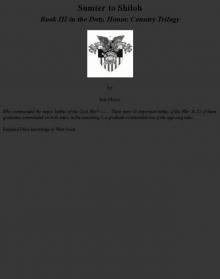 Sumter to Shiloh
Sumter to Shiloh Dragon Sim-13
Dragon Sim-13 The Line
The Line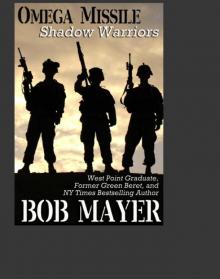 Omega Missile (Shadow Warriors)
Omega Missile (Shadow Warriors) The Rift
The Rift The Jefferson Allegiance
The Jefferson Allegiance Project Aura
Project Aura Synbat
Synbat Ides of March (Time Patrol)
Ides of March (Time Patrol) Nightstalkers a5-10
Nightstalkers a5-10 Lost Girls tc-2
Lost Girls tc-2 West Point to Mexico
West Point to Mexico Mexico to Sumter
Mexico to Sumter Area 51_Invasion
Area 51_Invasion Eternity Base
Eternity Base The Line bo-2
The Line bo-2 Atlantis Gate
Atlantis Gate I, Judas
I, Judas Area 51_Redemption
Area 51_Redemption Bodyguard of Lies
Bodyguard of Lies Cut Out
Cut Out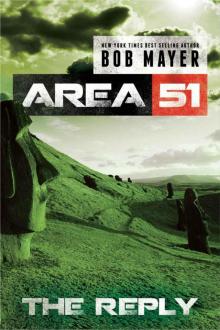 The Reply (Area 51 Series Book 2)
The Reply (Area 51 Series Book 2) Synbat tgb-3
Synbat tgb-3 The Book of Truths a5tn-2
The Book of Truths a5tn-2 Eyes of the Hammer (The Green Beret Series)
Eyes of the Hammer (The Green Beret Series)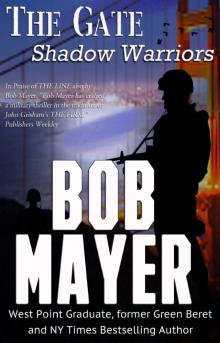 The Gate
The Gate The Gate bo-1
The Gate bo-1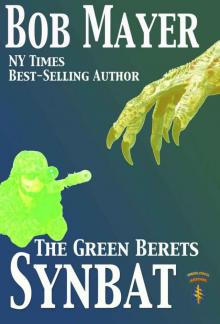 Synbat v5
Synbat v5 Omega Sanction
Omega Sanction Z
Z Chasing the Son
Chasing the Son Nightstalkers
Nightstalkers The Book of Truths
The Book of Truths Dragon Sim-13 tgb-2
Dragon Sim-13 tgb-2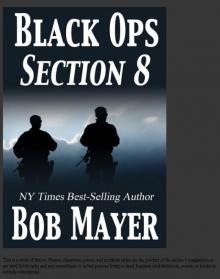 Section 8
Section 8 Chasing the Ghost v5
Chasing the Ghost v5 Psychic Warrior
Psychic Warrior Chasing the Lost
Chasing the Lost The Kennedy Endeavor (Presidential Series Book 2)
The Kennedy Endeavor (Presidential Series Book 2)